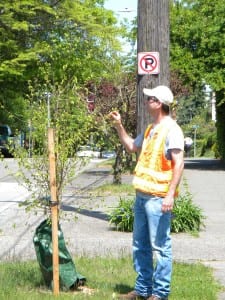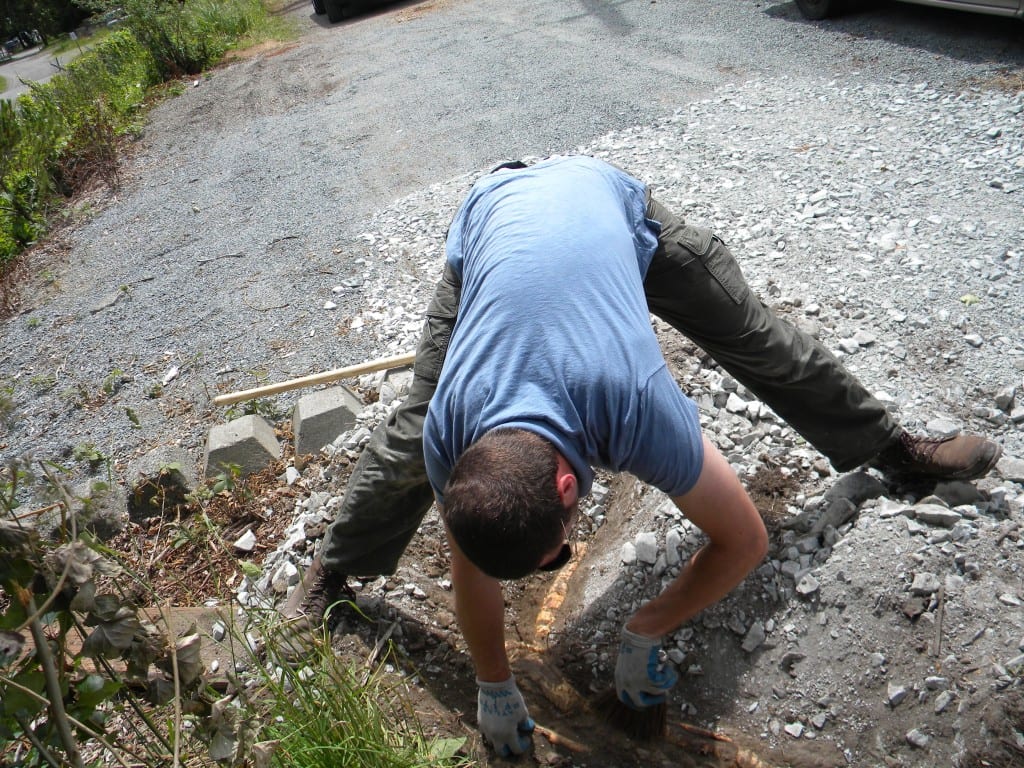 A Seattle City Light vegetation management team that was expanded three years ago is cutting the number of outages customers experience by better managing clearances around power lines.
A Seattle City Light vegetation management team that was expanded three years ago is cutting the number of outages customers experience by better managing clearances around power lines. This is the latest in an occasional series of posts featuring some of the interesting jobs and work at Your Seattle City Light.
A Seattle City Light vegetation management team that was expanded three years ago is cutting the number of outages customers experience by better managing clearances around power lines.
The greater Seattle area is home to a great urban forest that is one of the reasons Seattle is called the Emerald City, but those wonderful trees can cause problems for your electrical service if they come into contact with power lines.
Over the past decade, 49 percent of all power outages for Seattle City Light customers were caused by trees coming in contact with power lines. In 2010, Seattle City Light funded a comprehensive Vegetation Management Unit with four International Society of Arboriculture Certified Arborists (ISA-CA). The unit was created to better manage clearances around power lines, promote public safety and reduce outages.
Since the unit started work, the number of outages dropped on 69 percent of the feeder power lines where trees and vegetation have been trimmed. Feeder lines take electricity from substations into neighborhoods and typically serve 3,000 to 3,500 homes and businesses.
“We are very focused on the urban forestry goals of the City of Seattle, our franchise cities and those of the utility,” City Light Arboriculturist Dave Bayard said.
City Light arboriculturists manage about 100,000 trees in the utility’s service area. Arboriculturists use a geographic information system (GIS) to keep track of feeders and electrical currents running through the 1,700 miles of overhead power lines in the service area.
City Light also uses seven certified arborist contractors that notify customers of work to be done on vegetation near their home.
Contractors perform a four-year trimming cycle on trees near service feeders that provide electricity for customers. The contractors then investigate trees to determine if removal of a tree is necessary to better provide safety for customers. If a tree needs to be removed and is located on public property, the contractors will notify surrounding customers of the action 10 days prior to the removal. A tree on private property requires written approval by the property owner prior to notifying surrounding customers.
“We prefer to trim a tree if we can, but it’s all about the ‘right tree in the right place,’” Bayard said. “A tree that wants to mature at 100 feet directly under our lines is a hazard and a costly maintenance issue, and these trees we’d rather remove and replace.”

City Light’s Glen Allen inspects a tree planted by the utility that won’t grow into power lines. It’s the “right tree in the right place.”
City Light has five vegetation crews of its own with 20 employees – two right of way crews, two gardener and landscape crews and one tree crew.
Right of way crews perform vegetation management on the utility’s transmission right of way and maintain access to the transmission towers. Gardeners and landscapers maintain the landscaping on all City Light properties and restore private landscapes that are affected by utility work, such as replacing a pole or an underground power line.
The tree crew consists of line-clearance qualified tree-trimmers who can remove and trim trees within a small distance of high voltage transmission lines. They also respond to emergencies and do storm clean-up as needed.
Customers can call the vegetation management department directly at (206) 386-1733 to address concerns about a particular tree on public or private property. In an emergency, the situation can be evaluated, properly addressed and taken care of in a single day. Most cases are not emergencies and are still resolved within three weeks at most.
“By the time we have addressed customer concerns, about 90 percent understand that we’re doing the best we can by their trees, even if they’re not always happy with the results,” Bayard said.
Vegetation management also hires an unusual group to help maintain overgrown shrubbery and nuisance plants. Gardeners that maintain substations have hired a goat herder to bring in their goats to eat the blackberries and any other nuisance vegetation that might pop up on steep slopes which pose a danger to people, but are pretty much a goat’s cup of tea.
City Light was recognized as a 2013 Tree Line USA Utility by the Arbor Day Foundation for best practices and enhancing the urban forest.
The Tree Line USA program seeks to promote best practices in utility arboriculture and public education through five core standards:
- Quality tree care
- Annual worker training
- Tree planting and public education
- Operating a formal tree-based energy conservation program that makes special consideration of the value of trees in conserving energy
- And hosting an Arbor Day celebration.
City Light’s achievement makes Seattle one of only three cities in Washington to be recognized with all three awards from the Arbor Day Foundation – Tree Line USA Utility, Tree City USA (City of Seattle) and Tree Campus USA (University of Washington).
Seattle City Light is the 10th largest public electric utility in the United States. It has some of the lowest cost customer rates of any urban utility, providing reliable, renewable and environmentally responsible power to nearly 1 million Seattle area residents. City Light has been greenhouse gas neutral since 2005, the first electric utility in the nation to achieve that distinction.
